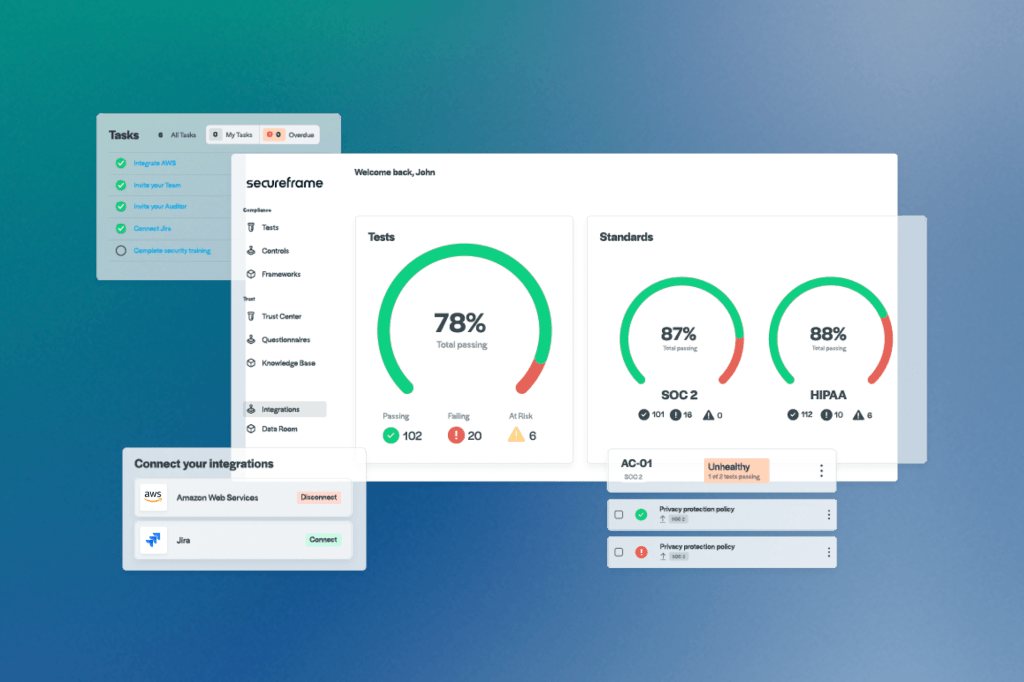This week’s AI roundup showcases how major players are carving distinct paths in the artificial intelligence landscape. While xAI pushes the boundaries of reasoning capabilities with Grok-3’s “Big Brain” mode, Perplexity is democratizing AI research by making its competitive Deep Research tool freely accessible. Meta’s announcement of LlamaCon represents a renewed commitment to open-source AI development. Meanwhile, traditional institutions like The New York Times are carefully integrating AI into their operations while maintaining editorial standards, and compliance platform Secureframe demonstrates how AI can streamline complex business processes.
Perplexity Enters Deep Research Race with Free-First Approach
Perplexity has launched its Deep Research feature, marking a significant development in the AI research assistant space that already includes offerings from OpenAI and Google. This tool represents a new approach to AI-powered research, working iteratively by searching through documents, analyzing their content, and continuously refining its research strategy based on what it learns – mimicking the way humans approach learning about new topics.
Perplexity’s offering has shown promising results in benchmark testing, scoring 21.1% on Humanity’s Last Exam, a comprehensive test of expert-level knowledge across various academic fields. This performance significantly outpaces several major competitors, including Gemini Thinking at 6.2% and GPT-4o at 3.3%, though it falls short of OpenAI’s Deep Research score of 26.6%. However, Perplexity is differentiating itself through its accessibility strategy rather than just raw performance metric
While OpenAI’s Deep Research requires a $200 monthly Pro subscription, Perplexity has opted for a freemium model. Non-subscribers can access the tool for a limited number of daily queries at no cost while paying subscribers will get unlimited access. The company has also achieved notable efficiency gains, with most research tasks completed in under three minutes, compared to OpenAI’s broader 5-30-minute range.

Meta Launches LlamaCon as Open Source AI Competition Intensifies
Meta has announced LlamaCon, its first conference dedicated to generative AI, marking a significant expansion of the company’s open-source AI strategy. The single-day event, scheduled for April 29, 2025, represents Meta’s targeted response to the rapidly growing adoption of its Llama ecosystem and the evolving dynamics in the open-source AI landscape.
The announcement comes separately from Meta’s flagship Connect conference, which will maintain its traditional September timeframe (September 17-18, 2025), focusing on virtual and mixed reality. This separation highlights Meta’s strategic decision to give its AI initiatives their dedicated platform, reflecting the growing importance of Llama in the company’s portfolio.
The Llama family of models has gained considerable traction in the enterprise space, with Meta reporting hundreds of millions of downloads and adoption by major companies like Goldman Sachs, AT&T, and DoorDash. The company has built a robust ecosystem of 25 hosting partners, including technology giants like Nvidia, Databricks, and Snowflake, who have enhanced the platform with additional capabilities such as proprietary data integration and latency optimization.
However, Meta’s position in the open-source AI space is facing unexpected pressure from Chinese AI company DeepSeek, whose recent innovations have reportedly surpassed the performance expectations for Meta’s upcoming Llama release. The situation has prompted Meta to create dedicated teams to analyze DeepSeek’s cost-efficient approach to model deployment and operation, aiming to incorporate these insights into Llama’s development.
In response to these competitive pressures, Meta is making an unprecedented investment in its AI future, allocating up to $80 billion this year for AI development, talent acquisition, and infrastructure expansion. CEO Mark Zuckerberg has outlined an ambitious roadmap for Llama, including the development of reasoning models to compete with OpenAI’s o3-mini, native multimodal capabilities, and future autonomous functionalities. Zuckerberg’s vision for 2025 positions Llama as potentially becoming “the most advanced and widely used AI model” in the open-source space.
Grok-3: xAI’s New “Big Brain” Reasoning System Comes With a Price Hike
xAI has unveiled Grok-3, introducing new reasoning capabilities through its “Big Brain” and “Think” modes. The model, which xAI claims has 10x more computing than its predecessor, focuses on breaking down complex problems into smaller tasks and implementing self-fact-checking. This puts Grok in direct competition with similar reasoning-focused models like OpenAI’s o1, DeepSeek’s R1, and Google’s Gemini Flash Thinking.
The update comes with a significant price increase for access – X Premium Plus subscribers, who get first access to Grok, will now pay $40 monthly (up from $22), while a new “SuperGrok” tier is being introduced at $30 monthly. Musk positions the model as “maximally truth-seeking,” maintaining his stance on reduced AI constraints.
The New York Times Embraces AI Tools While Fighting AI Companies
The New York Times is taking a carefully balanced approach to AI adoption in its newsroom, introducing Echo, an internal AI tool for summarization and content enhancement, alongside approved access to platforms like GitHub Copilot, Google Vertex AI, and select Amazon AI services. Editorial staff are now encouraged to leverage these tools for tasks like suggesting edits and SEO headlines and generating interview questions.
Despite this embrace of AI assistance, the Times maintains strict editorial boundaries – all AI outputs must pass through human journalists’ review, and the tools cannot be used for direct article drafting or generating unlabeled AI content. This technological evolution comes amid the Times’ ongoing legal dispute with OpenAI and Microsoft over AI training data usage, highlighting the complex relationship between traditional media and AI advancement.
Tool of the Week: Secureframe
Secureframe offers a comprehensive compliance automation platform that addresses one of the most challenging aspects of modern business operations: maintaining multiple security certifications and standards. At its core, the platform helps organizations manage complex compliance frameworks like SOC 2, ISO 27001, HIPAA, and PCI DSS through automated evidence collection, continuous monitoring, and risk management tools.

The platform stands out through five key capabilities:
- Automated Evidence Collection: The system continuously gathers, organizes, and updates compliance documentation, eliminating much of the manual work associated with audit preparation.
- Personnel Management: A comprehensive system for tracking employee access permissions, security training completion, and role-based compliance requirements, ensuring staff maintain proper security protocols.
- Vendor Management: Tools for monitoring and assessing third-party security risks, including automated vendor security reviews and continuous monitoring of vendor compliance status.
- Continuous Monitoring: Real-time surveillance of compliance-related metrics and controls, with immediate alerts for deviations from required standards or potential security issues.
- Risk Management: An integrated system for identifying, assessing, and remediating security gaps, with tools for risk assessment and prioritization of security improvements.
Secureframe’s ability to handle multiple compliance frameworks simultaneously makes it particularly valuable. Rather than treating each certification as a separate project, the platform identifies overlapping requirements across different standards, allowing organizations to reuse evidence and controls. This approach significantly reduces the redundant work typically associated with maintaining multiple certifications.
Keep ahead of the curve – join our community today!
Follow us for the latest discoveries, innovations, and discussions that shape the world of artificial intelligence.


